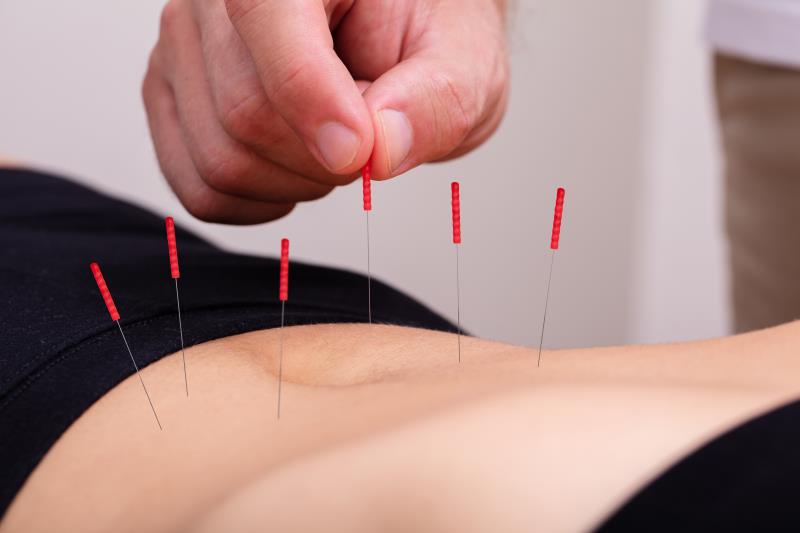
Acupuncture helps relieve pain and improve function in individuals with chronic sciatica resulting from herniated disk, as shown in a study.
The study was conducted in multiple tertiary-level hospitals in China and included 216 adults with chronic sciatica stemming from herniated disk. These participants were randomly assigned to undergo 10 sessions of acupuncture (n=108) or sham acupuncture (n=108) over 4 weeks. Participants, outcome assessors, and statisticians were blinded to intervention assignment.
Changes in visual analogue scale (VAS) for leg pain and Oswestry Disability Index (ODI) from baseline to week 4 were assessed as the co-primary outcomes. Secondary outcomes were adverse events (AEs).
At week 4, the VAS for leg pain score decreased with a significantly greater magnitude in the acupuncture group than in the sham group, with a mean difference of −16.0 (95 percent confidence interval [CI], −21.3 to −10.6; p<0.001). The same was true for the ODI score, with a mean difference of −8.1 (95 percent CI, −11.1 to −5.1; p<0.001) in favour of acupuncture.
VAS leg pain and ODI scores were consistently lower in the intervention group compared with the control group, with significant differences being observed as early as week 2 (mean difference in VAS leg pain, −7.8, 95 percent CI, −13.0 to −2.5; p=0.004; mean difference in ODI, −5.3, 95 percent CI, −8.4 to −2.3; p=0.001) and persisting through week 52 (mean difference, −10.8, 95 percent CI, −16.3 to −5.2; p<0.001; mean difference, −4.8, 95 percent CI, −7.8 to −1.7; p=0.003, respectively).
AEs occurred in 24.1 percent of participants in the acupuncture group and in 4.6 percent of those in the sham group. The most common AEs were subcutaneous haemorrhage and minor bleeding. There were no serious AEs documented.